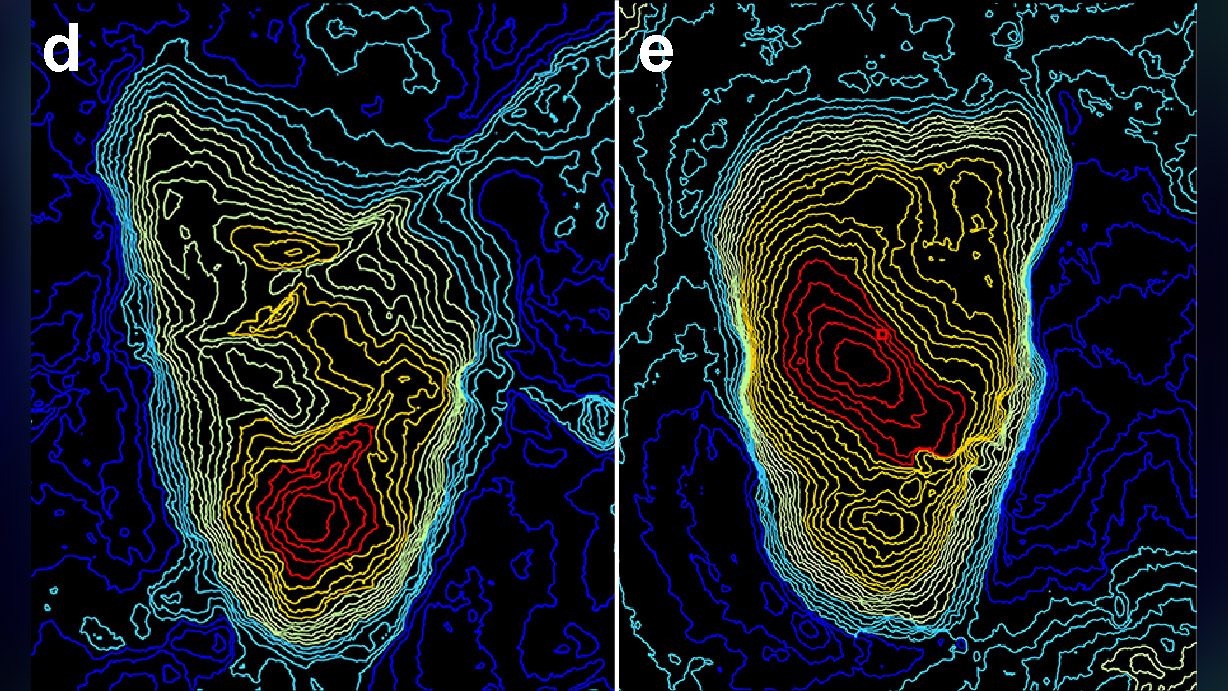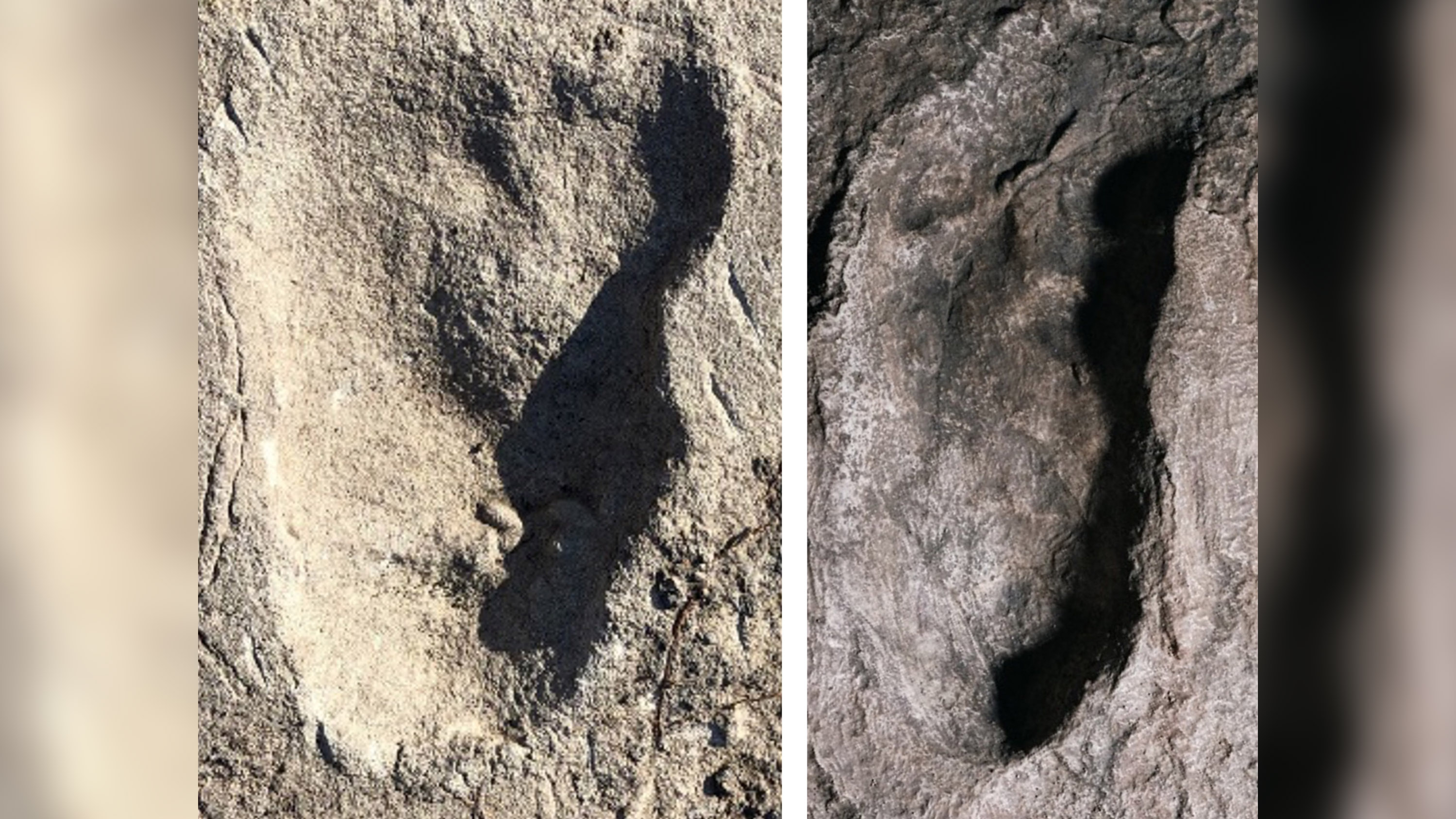Unknown human ancestor may have walked a bit like a bear on its hind legs
An unknown human ancestor walked funny and lived in the same place and at the same time as the famous "Lucy" ancestor in Tanzania.

Ancient footprints reveal a mysterious relative of humans may have lived at the same time and in the same area as the famous human ancestor "Lucy" in Tanzania. Strangely, these enigmatic tracks possess an unusual cross-stepping gait where one leg crossed over the other during walking, a new study finds.
The oldest solid evidence of upright walking among hominins — the group that includes humans, our ancestors and our closest evolutionary relatives — are tracks discovered at Laetoli in northern Tanzania in 1978. The footprints date back about 3.66 million years, and previous research suggested they were made by Australopithecus afarensis, the species that ranks among the leading candidates for direct ancestors of the human lineage and includes the famed 3.2 million-year-old "Lucy."
Other footprints discovered at the nearby "site A" in 1976 proved more enigmatic. One possibility was that these unusually shaped tracks — five consecutive footprints — were left by an unknown hominin. Another was that they were made by a bear walking on its hind legs.
Related: In photos: 'Little foot' human ancestor walked with 'Lucy'
These strange "Laetoli A" tracks were never fully excavated. To solve the mystery of the origins of these tracks, scientists have now fully examined these footprints and compared them with tracks from humans, bears and chimpanzees.
One of the first major hurdles as the scientists began this research "was our difficulties trying to track down original casts of the Laetoli A prints from their initial discovery," study lead author Ellison McNutt, a biological anthropologist at the Heritage College of Osteopathic Medicine at Ohio University, told Live Science. "We were unable to locate any original casts and were concerned that exposure to the sun and decades of seasonal rains may have destroyed the original fossil prints."
Luckily, when the researchers went back to Laetoli to re-excavate the prints, they found "the rains had actually washed nearby sediment over the original footprints, which protected them and allowed them to remain beautifully preserved," McNutt said.
Sign up for the Live Science daily newsletter now
Get the world’s most fascinating discoveries delivered straight to your inbox.
The scientists went on to clean, measure, photograph and 3D-scan the footprints. "Looking at the fully excavated 'A' prints, we knew immediately that these were really intriguing and potentially different from the other two bipedal trackways at Laetoli," McNutt said.

Next, McNutt and her colleagues teamed up with Ben and Phoebe Kilham, who run the Kilham Bear Center, a rescue and rehabilitation center for black bears in Lyme, New Hampshire. They identified four semi-wild juvenile black bears at the center that have feet similar in size to that of the Laetoli A tracks.
The researchers used maple syrup or applesauce to lure the bears to stand up and walk on their two hind legs across a trackway filled with mud to capture their footprints. They found the gait seen with the Laetoli A tracks bore a closer resemblance to those of hominins than those of bears.
"As bears walk, they take very wide steps, wobbling back and forth," study senior author Jeremy DeSilva, a paleoanthropologist at Dartmouth University, said in a statement. "They are unable to walk with a gait similar to that of the site A footprints, as their hip musculature and knee shape does not permit that kind of motion and balance."

In addition, the prints suggest feet more like those of hominins than bears. Bear toes and feet are fan-like and they have tapering heels, while the Laetoli A prints, like those of hominins, are squared off with a prominent big toe and a wide heel.
The researchers also collected more than 50 hours of video of wild black bears. The bears walked on their hind legs less than 1% of the total observed time, making it unlikely that a bear made the footprints at Laetoli A, especially given that no footprints were found of this individual walking on four legs. Moreover, the scientists noted that although thousands of animal fossils have been found at Laetoli, none are from bears.
However, the Laetoli A tracks are unlike those of any other known hominin. The footprints are unusually wide and short, and the feet that made them may have possessed a big toe capable of thumb-like grasping, similar to the big toe of apes.
All in all, McNutt and her colleagues concluded the Laetoli A prints were made by an as-yet-unidentified hominin, and not by A. afarensis.
Related: How many early human species existed Earth?
"Our work suggests that the Laetoli A prints are one of the oldest unequivocal pieces of evidence in the hominin fossil record of multiple hominin species coexisting in the same area at the same exact time," McNutt said. "It is not inconceivable that the individual who made the A trackway could have looked across the landscape and seen A. afarensis individuals."
Curiously, this hominin walked with an unusual cross-stepping gait — each foot crossed over the body's midline to touch down in front of the other foot.
"The ability of this individual to demonstrate cross-stepping is actually one of the additional lines of evidence that Laetoli A was made by a hominin," McNutt said. Primates that primarily walk on all fours, such as chimps, "lack the necessary anatomical adaptations in their hips and knees to allow them to maintain their balance while placing one foot across the midline past the other."
Although humans typically do not cross-step, "it does happen occasionally," McNutt said. "It can be used as a strategy to help walk across uneven or slippery surfaces."
Still, the cross-stepping may not have resulted from a hominin attempting to keep their balance. "Other potential options include that this particular individual hominin walked in a peculiar manner," McNutt said. "It is also possible that this unknown hominin species was adapted to walk in this way. We'll be able to answer these questions more clearly as more footprints are discovered."
In the future, the researchers aim to continue excavations at Laetoli around site A. "Additional prints from this individual or others made by the same species may give us further insight into how they moved across the landscape and what species they belonged to," McNutt said.
The scientists detailed their findings in the Dec. 2 issue of the journal Nature.
Originally published on Live Science.











